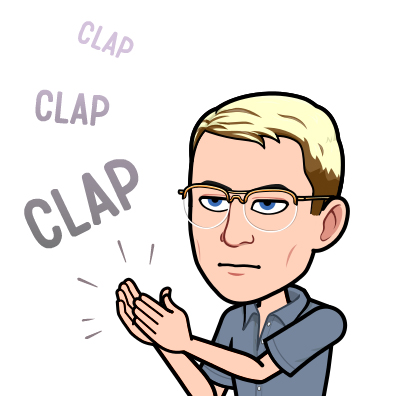- cross-posted to:
- news@lemmy.world
- cross-posted to:
- news@lemmy.world
The 30-year mortgage rate shot up the day after the Federal Reserve cut interest rates.
Hours after the Federal Reserve cut its benchmark interest rate on Wednesday by 25 basis points, mortgage rates ticked up 9 basis points.
…
The Fed announced Wednesday that it would trim its key policy rate by a quarter of a percentage point, bringing it to the range of 4% to 4.25%. Around the time of the announcement, Mortgage News Daily, a website that posts daily updates on rates, crashed - possibly the result of people flocking to the site to see how mortgage rates reacted. The company told MarketWatch it was looking into why the site was down that afternoon.
Mortgage News Daily later reported that the 30-year rate went up by 9 basis points (0.09%) to 6.22% on Wednesday. On Thursday, it reported that the 30-year rate had gone up by 15 more basis points, to 6.37%.
In contrast, a report by Freddie Mac measuring weekly averages for the 30-year rate found that mortgage rates fell to the lowest level in 12 months on Thursday. That’s because Freddie Mac’s report gathered information prior to and after the Fed’s decision was announced. The weekly report doesn’t survey lenders, but is based on actual mortgage applications to lenders across the country that are sent to Freddie Mac.
… Mortgage rates aren’t tied to the Fed’s interest-rate moves. Instead, they typically fall in advance of a Fed rate cut, as MarketWatch has reported, because bond investors are trying to anticipate where the central bank will go. Mortgage rates are priced off the 10-year Treasury note BX:TMUBMUSD10Y by adding a spread.
Hence, the 10-year Treasury yield is a better gauge of how mortgage rates will move - and the 10-year yield was trending higher Thursday.
Mortgage rates have decoupled from the Fed’s benchmark / targets, basically, because fiscal policy and the overall economic outlook are so bad that traditional monetary policy is no longer effective.
This is generally what economists would call ‘a bad sign’.
Myself, I would go so far as ‘a very bad sign.’
My condolences to anyone who confused their local new/used home salesperson with a qualified economist, if they told you, and you believed, something like 'Fed rate cuts will lower mortgage rates!"
This is a very common misconception. Mortgage rates have never had anything to do with the Fed funds rate (which deals in very short-term loans between banks and the Fed itself). They’re determined by the yield on 10-year U.S. Treasuries.
However, this mismatch is not an inherent sign of an inverted yield curve, which is an absolutely worrisome development that historically presages a recession. We’re definitely on our way there with import taxes and the job market falling off a cliff, but this is not the canary in the coal mine you fear it to be.
Yes, it is a common conception that mortgage rates are directly tied to the Fed funds rate, because that is basically what Real Estate agents tell people all the time.
The yield on the 10 year treasury normally does respond as one would expect from Fed actions, within about 30 to 60 days… but in certain situations, this breaks down for not only 10 yr treasuries, but in other ways as well.
The Fed controls the Funds target rate, and also tries to manipulate the SOFR, which plays a substantial role in … more or less, international shadow banking via currency exchange… the Fed attempts to manage SOFR and the Fed Funds rate via the reverse repo rate as a lower bound and the discount window award rate as the upper bound.
When the SOFR, or actual market rates for the 10 yr begin to buck outside of the channel made by those two bounding rates… something is up with the banking system broadly.
And that has been the case for about the last week.
Finally, irt to inverted yield curve…
You must have missed the last 2 or 3 years where the yield curve has been inverted, then univerted, then inverted again, and at least by the way I count it, inverted and univerted a 3rd time.
Recessions tend to happen rather rapidly when the yield curve uninverts.
Not usually during the inversion period.

Roughly, think of the curve inversion period being when a whole bunch of investments are being moved around in the background (uncertainty), and then roughly when the curve uninverts, well now the money has placed its bets on what is going to happen, which sectors will trend down and which will be safe havens (certainty).
So, we are now in the certainty phase, we will certainly have a broad recession (I’d argue it’ll be more like the 2nd Great Depression in scope), following after the longest period of yield curve nonsense in recorded history.
To summarize:
The downturn happens soon after the yield curve uninverts.
The yield curve inverting is your leading indicator, when it uninverts, pain is soon to follow.
What is happening is the US is now having a debt and currency crisis, we are no longer the defacto reserve currency, the defacto national bond market to park money in, the rest of the world is increasingly finding better ROIs elsewhere.
First off, I apologize for what must have come across as condescension. You’re clearly far more steeped in economics than I am; my knowledge, limited as it is, comes from editing stories, not any formal economic education.
But I’ve been seeing this idea that mortgage rates track with the overnight lending rate quite a bit of late (it’s pervasive on Reddit), and, as so frequently happens, when I finally snap, it’s at the wrong person.
Mea culpa.
Thank you for the detailed analysis. I’ve honestly not been following the markets in general in several years, since at this point, I’m not a participant in that world, and I’m not going out of my way to find out what short- and long-term rates are doing.
But holy shit … three cycles of inversion? That’s not a red flag but rather “we’re fucked.” It also suggests that while Trump may be ushering this to its logical conclusion, structural flaws were evident to investors years prior (go figure, with the sort of debt we’ve been piling up). I concur with your assessment that this depression is going to make 2008 look like a minor blip.
The U.S. had a good run as the controller of the world’s economy, but I swear our foot-shooting gun is an AR-15. Totally unrelated sidenote, if you look at the price of gold, it doesn’t suggest there’s a sudden surge in demand for bullion, but rather that the dollar has been systematically debased. I inherited some in college, and I sold it to go on a ski vacation with friends in 1999 – at $289/oz.
The only reason we have trillion-dollar companies is … dollars aren’t worth much anymore. I got a shave and a haircut last week. Didn’t ask the price, as it was a new local place I was trying out. But it was $50 (thank goodness I had that much on me – I was expecting $30 at most). A far cry from the famous price in the song.
Hey no problem, I certainly do not blame you for … assuming I am yet another internet armchair economist with no actual clue what I am talking about.
Now, I am not a proper like, PhD economist academic… but I did get my BSc in Econ and BA in Poli Sci … literally during the GFC… specialized in Econometrics and Political Economy, then went on to be a data analyst, business intelligence analyst, as well as various software dev / db managment roles.
And yeah, so, there are slightly different technical ways by which economists and corpo quants and day traders measure ‘what exactly counts as a yield curve inversion’, there is no 100% agreed upon exact single metric for measuring the whole yield curve for inversion…
…But yeah, you can see from that graph that we certainly have had between 2 to 3 years of nonsense in the yield curve, and I basically think of this akin to plate tectonics: the longer and more intense the period or curve inversion, the longer and more intense the subsequent correction / downturn, sort like how the longer you have two tect. plates pushing on each other without any tremors… the larger the inevitable earthquake will be when the plates finally slip.
It also suggests that while Trump may be ushering this to its logical conclusion, structural flaws were evident to investors years prior (go figure, with the sort of debt we’ve been piling up). I concur with your assessment that this depression is going to make 2008 look like a minor blip.
Yeah, exactly, imo, there have been more and more warning signs from all over the economy, basically after Covid, that a whole bunch of shit was looking uh, wack, yo.
But Trump and his policies pulled the trigger, made what … could have been roughly ‘manageable’, in the vein of Japan’s lost decades of stagnation… flip over into total collapse.
And yeah, a whole lot of the more recent uh, stock market boom?
Compare it to the dxy, and you can see that a lot of it is just from the dollar losing value against other currencies, and the rest is … more or less what Greenspan would have called ‘irrational exuberance’ in the tech sector, AI is the ‘final bubble’ thats been blown to try to negate the predictable collapse of our latest, bigger and badder housing bubble.
You don’t even wanna know how fucked and illiquid and just flat out corrupt commerical real estate is, that was one of the main reasons behind RTO mandates imo, can’t have megacorps taking massive balance sheet losses on their insanely overvalued workspaces nobody actually needs to use.
Finally: Yep, I just got myself a buzz trimmer / scissors hair kit thingymabob and extra mirror, and am teaching myself how to cut my own hair.
Those things cost as much as your latest haircut, lol.


